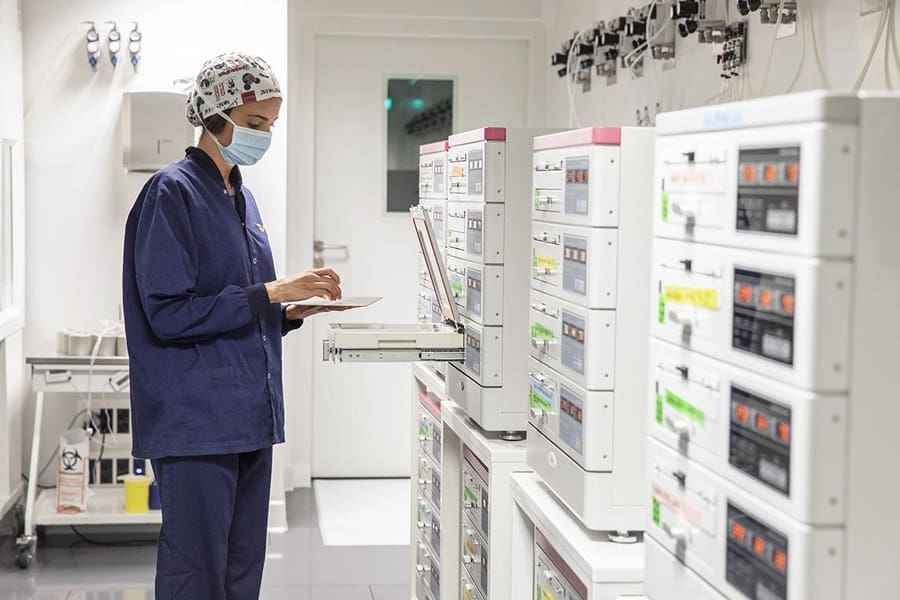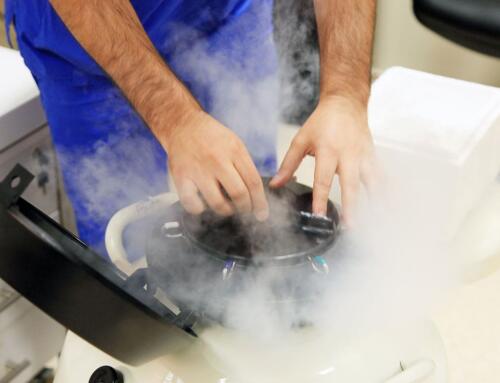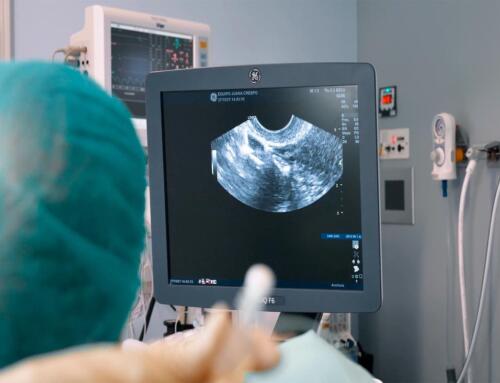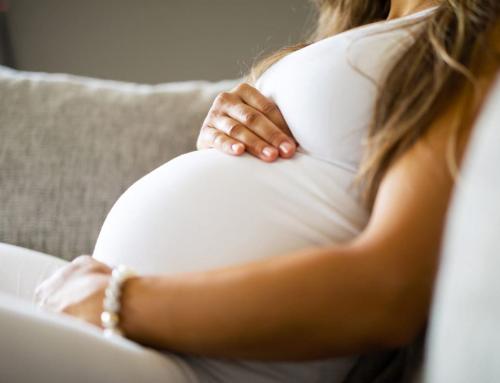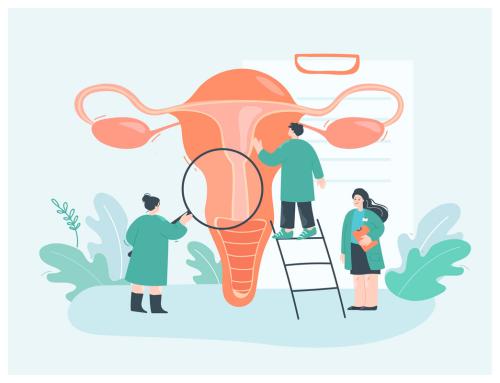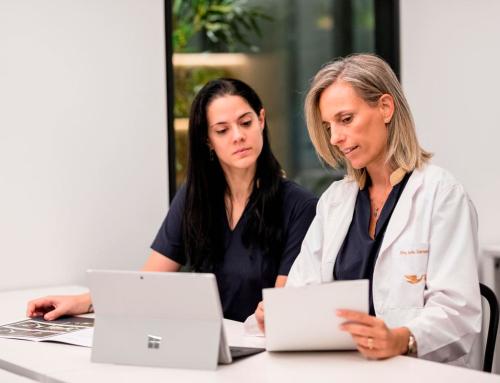.
How do we make sure that each of the embryos transferred in assisted reproduction clinics correspond to the right patient?
We know how important it is for each of our patients to feel completely sure about the traceability of the embryos and genetic material.
That is why in this article, we want to explain how the traceability of biological samples is carried out in our IVF laboratory. This is a protocol that is not mandatory for fertility clinics, but which we at Equipo Juana Crespo believe is essential to guarantee the safety of our patients and the peace of mind of all the professionals who work at the clinic.
The importance of traceability systems in the IVF laboratory
The news and cases in the world in which there have been errors or confusion when working with biological samples are well known. Fortunately, these cases are very few, barely 0.04%, but our obligatory objective is to achieve 0%.
In order to try to minimize these possible errors that can occur in assisted reproduction laboratories, the clinics have traditionally worked with the “double check” system, which involves working in pairs, that is to say, we work with a witness. Thus, when embryologists proceed to perform any IVF laboratory technique (insemination, vitrification, embryo transfer…) a partner verifies that the gametes or embryos are the correct ones.
With the double check, although the error is minimized, the probabilities of making a mistake still exist. That is why at Equipo Juana Crespo we have introduced an electronic traceability system using the double check system as an extra security measure.
What is the embryo traceability protocol about at Juana Crespo?
In Equipo Juana Crespo we have an electronic system that allows us to trace the embryos minimizing the risk of error to the maximum, since the effectiveness of using a partner as a witness does not eliminate human error.
It is a device that, through bar codes and QRs, is capable of detecting every movement or manipulation of the genetic material of each patient. In this way, any technique that has been performed, which gametes have been used and which person and at what time they have been manipulated are recorded. All this information is recorded in the clinical history of each patient.
This embryo traceability system is mandatory in countries such as England, however, in Spain, the decision to implement this technology is up to each clinic. Therefore, when choosing an assisted reproduction clinic, it is advisable to make sure of its embryo traceability system. This is the only way to be more confident and sure of the treatment that the genetic material will receive.
How is the embryo traceability protocol at Juana Crespo Team?
Within the laboratory we follow a traceability system using QR codes and barcodes. At all times, any biological material is identified. We identify the patient, we identify the tubes or plates where we are going to cultivate her gametes, embryos, etc. All this is reflected in the patient’s history and is reviewed at each step we take:
1-Before the ovarian puncture.
When the patient arrives in the operating room, the embryologist also enters and asks the nurse for the patient’s name and also asks the patient directly for her name. At the same time, the embryologist scans the barcode, the QR code that the patient has on the identification bracelet to check her medical history and that the data matches.
The tube in which the oocytes will be transported from the operating room to the laboratory is also scanned.
2-Once the puncture is done
After the ovarian puncture, the nurse takes the tube with the oocytes to the laboratory. Here we scan both the tube coming from the operating room and the plate where the oocytes are cultured until the moment of fertilization. This plate is kept in an incubator which is also recorded.
3-In the case of the semen sample
With the semen samples we proceed in the same way. Previously, the nurse identifies the patient and the jar in which the patient’s semen sample is left. This jar is identified with the name of the patient and his partner.
4-In case of donation
If there is egg donation or semen donation, the process is the same. Since the donation is anonymous, a numerical code is used which will be linked in the same way by means of a QR code to the recipient of these gametes.
5- At the moment of the transfer
In Juana Crespo we have a camera in the operating room, from which the team and the patient can see at all times how we take the embryo out of the incubator and take it to the operating room, just before the transfer. The patient can check her name and surname at all times and this allows us to double check because the patient, gynecologist and nurse can verify that it is the same name as the patient.
6-In case of vitrification
If it is necessary to vitrify the embryos, the same traceability process is followed as in the previous processes, identifying with barcodes and QR codes the devices in which the gametes or embryos are stored frozen. These devices are stored in cryotanks, so that each patient occupies a single position. We never put together embryos from different patients.
What aspects provide greater safety for patients
To achieve the best quality of the embryos, for the patient to get the best performance of the cycle and to avoid any accident or error, it is very necessary to make sure that the clinic has:
- Traceability protocol of the embryos and the rest of the genetic material, which we have already explained.
- It is also important to make sure that the laboratory is equipped with the latest technology, to ensure the proper maintenance of the incubators, as this directly influences the quality of the embryos.
- A professional and experienced staff. It is very important that in the laboratory only the trained personnel necessary for the work is present. The personnel must know how to move properly within the laboratory to avoid collisions or accidents.
- It is also necessary that the workflow in the laboratory is predetermined and the place where it takes place is defined. In this way the whole team knows what the colleague is doing and the risks of errors and accidents are minimized.
- Constant monitoring of the laboratory. It is important to control the room temperature, humidity, volatile detection system, control the temperature of the tanks, … all this can affect the performance of the cycle, the results … and the safety of each patient.
Maximum safety for everyone
Now you know which are the safety and embryo traceability measures that we carry out in our Juana Crespo Team IVF laboratory. As you can see, nothing is left to chance and everything follows a studied protocol. If you have any questions, we recommend you to contact us at 961 042 557 or, if you prefer, you can send us your query to info@juanacrespo.es . This way you will be able to book your first consultation at Juana Crespo Team and solve any doubts regarding assisted reproduction.


